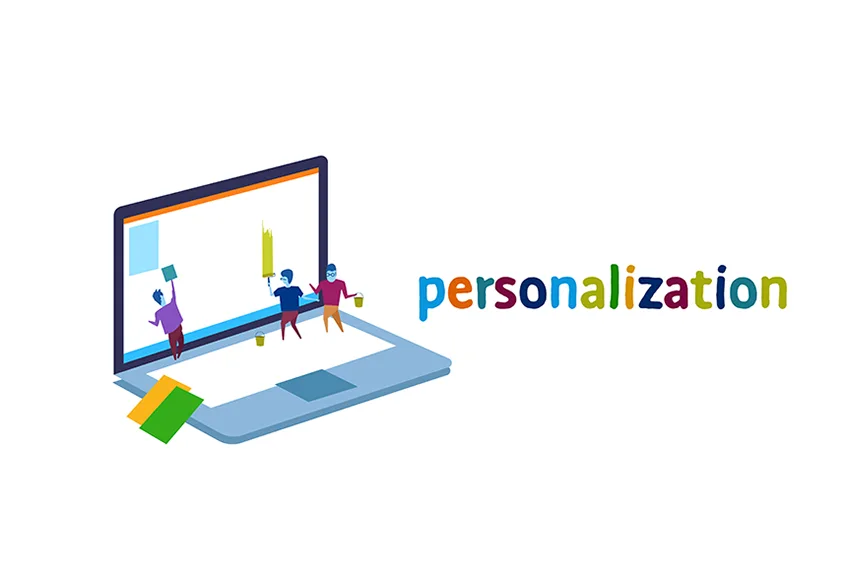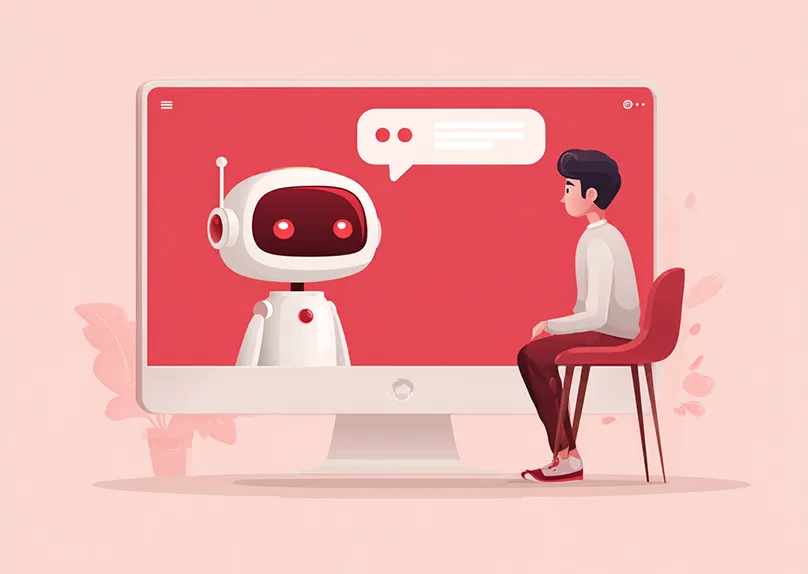Personalization CMS: How to Build Personalized Experiences with a Headless CMS

Amanda Lee

When done correctly, personalization can significantly enhance the digital experience, foster brand loyalty, and consistently delight customers every time they interact with a brand. 81% of consumers ignore irrelevant messages because they expect a tailored experience that feels like it was meant exclusively for them.
One way for businesses to gain more favor with consumers and ultimately have a positive impact on revenue is to deliver more personalized content to them across every channel.
To do that, they need the help of a personalization CMS. Let’s explore the important attributes of a CMS that natively supports personalization, and how you can leverage headless capabilities to build personalized experiences with CrafterCMS.
What Is a Personalization CMS?
A personalization CMS enables organizations to build, test, deliver and optimize personalized digital experiences by making variations to content assets based on demographics, customer behavior, historical data, and other factors.
It relies on headless architecture to pull data from other tools within a martech stack. Marketers can then leverage that data to create specified rules to personalize that content based on gender, how often a visitor comes to your sites, their current location, the site that referred them, and more.
Why Personalize Content With a Headless CMS
Using a headless CMS to personalize content is essential if brands want to keep up with customer demands. Here are a few reasons why it represents the best option:
Limitations of a Traditional CMS
A traditional CMS was built to only deliver content to one channel, such as a website or mobile device. That severely restricts how effective a personalization strategy can be, given that customers expect content on a host of other channels, including tablets, mobile applications, and even smart devices like watches and speakers.
Also, a traditional CMS uses a tightly coupled architecture connecting the front and backend. While they can integrate with other tools in the martech stack, these integrations are often difficult to accomplish, requiring tons of developer resources. Additionally, integrations don’t always work well, resulting in content and data silos that prevent the CMS from sourcing the data needed to accomplish any personalization efforts.
Seamless Integrations
A personalization CMS needs data from the rest of the systems in a martech stack to paint an accurate picture of the customer. Data needs to be pulled from a customer data platform (CDP), CRM, or experimentation tool, and seamless integration of all these tools is essential to get a personalization strategy right.
With a headless CMS, APIs are available to streamline these integrations. The CMS can also be connected to a personalization engine or analytics tool to get more insights from the data and further improve the personalized experience.
Omnichannel Personalization
A headless CMS ensures that when the customer views content on one channel and then goes to another, they don’t feel as if they’ve gone to a different brand website or you suddenly forgot who they were. With a headless CMS, omnichannel personalization is possible, enabling brands to create a seamless and connected experience as customers consume content wherever they please.
Accelerate Personalization With a Headless CMS Platform
Brands that want to accelerate their personalization efforts should rely on headless architecture. CrafterCMS provides an advanced headless CMS that meets the demands of modern enterprises, enabling them to deliver what today’s customers expect. CrafterCMS includes a targeting engine that can be used to create dynamic, personalized experiences, and as an API-first platform, it easily integrates with third-party personalization tools as well.
Some of CrafterCMS’s personalization features include:
Content Models, Metadata and Taxonomies: Define content models, metadata and taxonomy properties to drive content targeting and change how pages, components, and other services respond when content gets delivered to different individuals, user segments or groups within your audience.
Content Tagging: Tag content items with tags and metadata the incorporate targeting properties and drive personalized behaviors.
Personas: Define personas that describe the key characteristics of various user segments within your audience that will get personalized experiences specifically tailored for them.
In-Context Previews: Content authors can easily see how the entire content experience will look for a specific persona across all digital channels (computer, mobile device, kiosk, smart TV, etc.).
Scripting: CrafterCMS incorporates a Groovy scripting engine that enables you to script rules that consume any attributes from any context.
For example, it’s easy to script:
- whether a specific user profile has entered a page, and/or
- whether its a particular day of the week or time of the month, and/or
- whether inventory has reached a certain level,
and target content to the user based on the result(s).
With CrafterCMS’s content authoring tools, Crafter Studio, authors can simulate these values when creating content and see how the content experience responds under these conditions. And thanks to CrafterCMS’s headless capabilities, this can be done whether the visitor is browsing a website or interacting with an Alexa device.
Read More: How CrafterCMS Does Personalization
CrafterCMS also offers AI-enabled features to accelerate personalization.
AI- Powered Personalization
CrafterCMS empowers enterprises to deliver deeply personalized digital experiences by combining flexible content modeling with native AI capabilities. With built-in support for large language models (LLMs), AI-powered segmentation, and dynamic content delivery, teams can tailor messaging, offers, and experiences to individual users.
Designed for performance, scalability, and security, CrafterCMS enables the easy orchestration of personalized journeys. Whether you’re targeting first-time visitors or returning customers with specific preferences, CrafterCMS allows your team to automate personalization workflows and serve content that adapts to user behavior, intent, and context.
AI-Powered Search
CrafterCMS includes a built-in, AI-enhanced search engine powered by OpenSearch with integrated vector database capabilities. This combination enables keyword-based results and semantic understanding, allowing content teams to surface content that aligns with a user’s intent, preferences, or behavior. CrafterCMS can support more relevant, personalized search results and dynamic content recommendations, helping teams deliver smarter digital experiences directly from within the platform.
Take Your Personalization to the Next Level With CrafterCMS
Executing a personalization strategy takes a lot of effort and the proper support, particularly from the technology at your disposal. A headless CMS provides the ease of integrations and omnichannel content delivery that brands need to create personalized experiences, but that alone isn’t enough.
CrafterCMS provides the features that leading enterprises need to ensure that your content isn’t just personalized but delivers valuable results as well. Marketers can take advantage of a complete content authoring experience that is unique among headless CMSs, with a highly productive authoring experience that supports WYSIWYG content editing and drag-and-drop experience building.
Developers can also leverage a frontend-agnostic content delivery system that allows them to create experiences on any channel using the best modern frameworks they know. Whether that is Vue, React, Angular, Next.js, Svelte, HTML5, or something else.
In addition, CrafterCMS also enables DevContentOps processes, which can help to eliminate content silos and remove bottlenecks that can limit the creation, iterative testing and optimization of personalized experiences. With CrafterCMS, content teams, software developers, and IT operations can collaborate more efficiently than ever.
See how CrafterCMS does personalization and much more in this Youtube video: Introduction to CrafterCMS.
Related Tags
Related Posts

Websites Are Dead?

Mike Vertal

No-Code Experience Building for Marketers & Designers

Amanda Lee

The Future of Web Experiences: From Browsing and Searching to Conversational AI

Mike Vertal

Is Your CMS MACH-Ready? A Practical Guide for Enterprise Architects

Sara Williams
Related Resources
-

CrafterCMS at eBay: The Universal Content Platform for eBay.com
Webcast
-

Personalized Digital Experiences for a Cruise Liner
Webcast
-

Introducing CrafterCMS v4.0
Webcast
-

Modernizing Video Delivery and Content Management at CPAC, A Canadian Nationwide Broadcaster
Webcast
-

Building React Apps on a Headless CMS
White Paper





